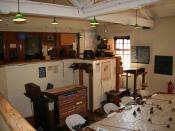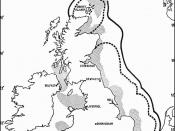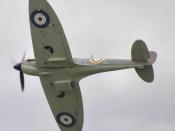British strategy in the 1930s was insular. Britain did not become allied with France until February 1938, and so had concentrated on defence. When Britain armed itself in the 1930s, its priorities were the Royal Air Force and the Royal Navy; the army being of little importance except to prevent an invasion - which would mainly be countered using bombers to drop bombs and gas on the invading army on its landing beaches, that is, if the landing craft had survived crossing the channel without being destroyed by the Royal Navy.
As a result of which, the Royal Navy, the largest in the world, vastly outnumbered the German Navy (at the outbreak of war, the Royal Navy consisted of seven Aircraft Carriers, 12 battleships, three battle cruisers, 15 heavy cruisers, 45 light cruisers, 184 destroyers, 58 submarines and 27 Torpedo boats. The German Navy consisted of no aircraft carriers, although one, the Graf Zeppelin, was under construction but never completed, two battleships, three pocket battleships, seven cruisers, 21 destroyers, 12 torpedo boats and 159 U-boats).
This was even more apparent after the Battle of Norway, in which Germany lost three cruisers and ten destroyers, with its two battleships and three other cruisers forced to remain in dockyards while being repaired for several months to come.
Radiolocation
Radiolocation was an invention of vital importance to the defence of Britain. As early as September 1935, the RAF planned to build a chain of 20 radar stations covering the area from the Tyne to the Isle of Wight. By June 1937, despite the inevitable teething problems, radiolocation was ready for use as a relied upon weapon of war. After the opening of the Dover Chain Home station in July 1937, it was estimated that a 20-station chain would take two years to erect,


